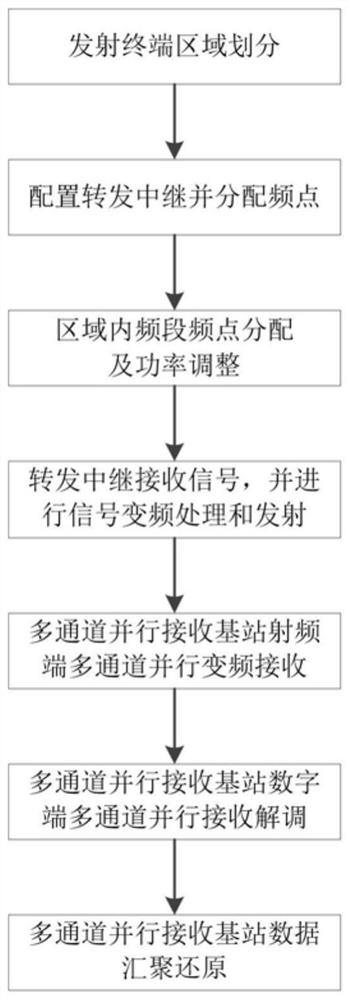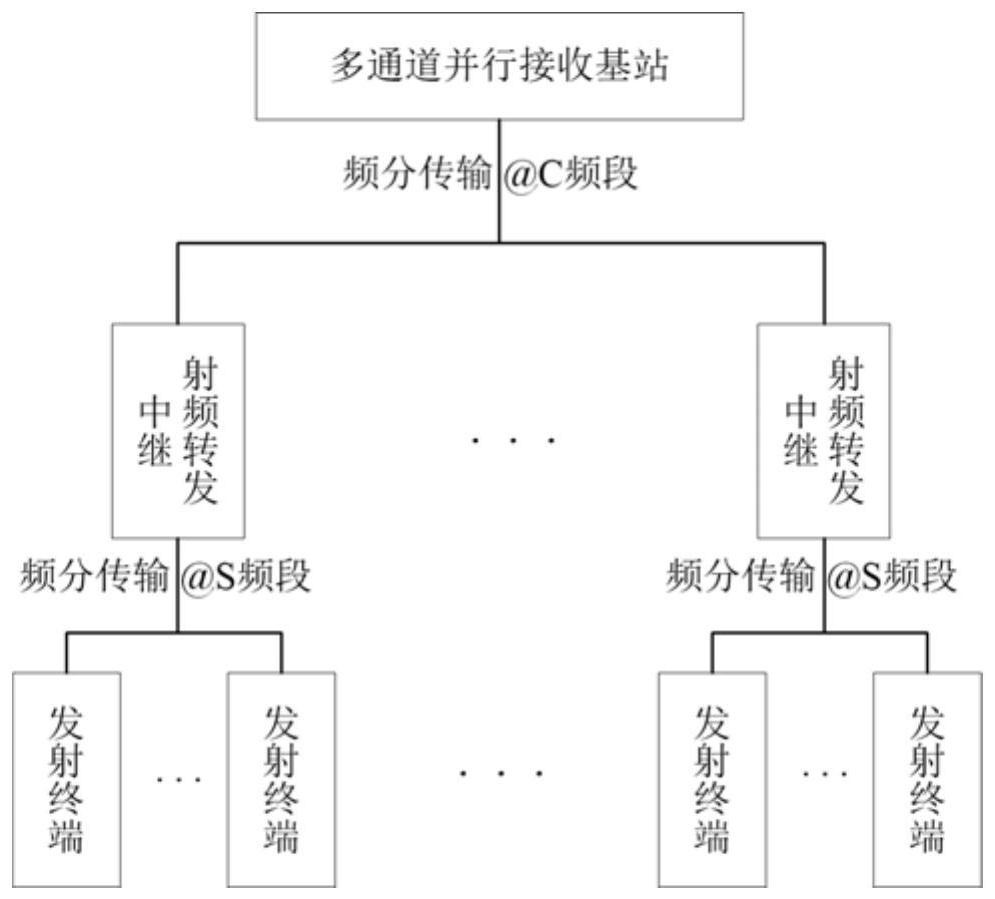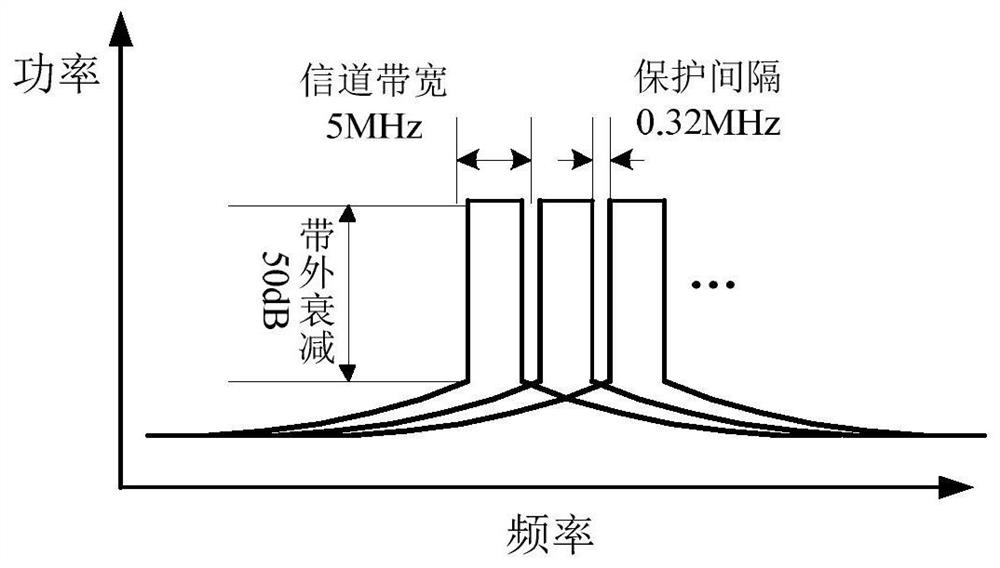A low-latency multi-node real-time wireless network transmission method based on radio frequency forwarding
A technology of wireless network and transmission method, applied in the field of low-latency multi-node real-time wireless network transmission, can solve the problems of large network transmission delay, fluctuation of delay amount, difficult real-time wireless transmission of large-capacity data, etc., to ensure signal transmission. performance, the effect of reducing hardware overhead
- Summary
- Abstract
- Description
- Claims
- Application Information
AI Technical Summary
Problems solved by technology
Method used
Image
Examples
Embodiment 1
[0027] In this embodiment, the transmitting terminal is divided into 7 areas, and 16 transmitting terminal nodes are set in each area. This example is based on figure 2 The wireless transport network hierarchy shown is implemented as figure 1 The multi-node real-time wireless network transmission shown is as follows:
[0028] S1: Divide all transmitting terminal nodes in the transmission network into 7 areas according to their location, and each area has 16 transmitting terminal nodes, and ensure the transmission isolation between areas (for example, when the modulation system is 16QAM, it is recommended to isolate 20dB); set the transmitting terminal to the radio frequency forwarding relay to use the S frequency band of WIFI, that is, 2.4GHz ~ 2.4835GHz, a total of 83.5MHz bandwidth, the 83.5MHz bandwidth is allocated to 16 transmitting terminals by frequency division multi-user mode, each Each node is allocated a 5MHz bandwidth. In order to reduce the interference between...
PUM
 Login to View More
Login to View More Abstract
Description
Claims
Application Information
 Login to View More
Login to View More - R&D
- Intellectual Property
- Life Sciences
- Materials
- Tech Scout
- Unparalleled Data Quality
- Higher Quality Content
- 60% Fewer Hallucinations
Browse by: Latest US Patents, China's latest patents, Technical Efficacy Thesaurus, Application Domain, Technology Topic, Popular Technical Reports.
© 2025 PatSnap. All rights reserved.Legal|Privacy policy|Modern Slavery Act Transparency Statement|Sitemap|About US| Contact US: help@patsnap.com



